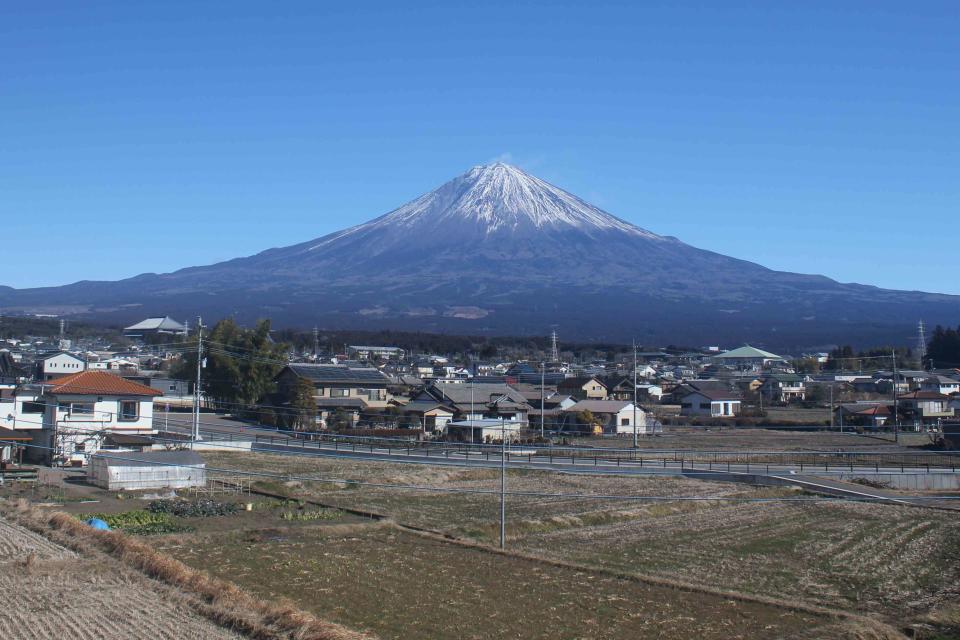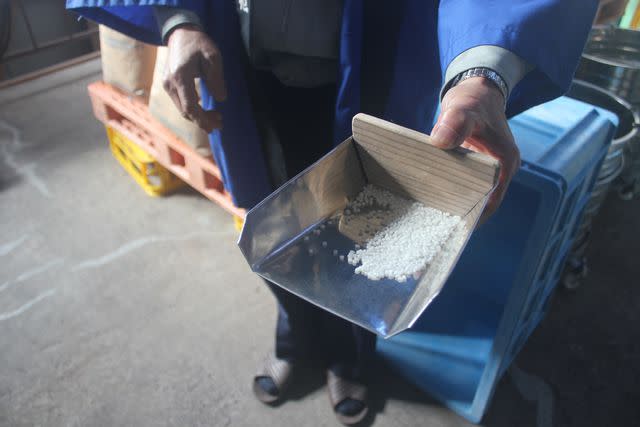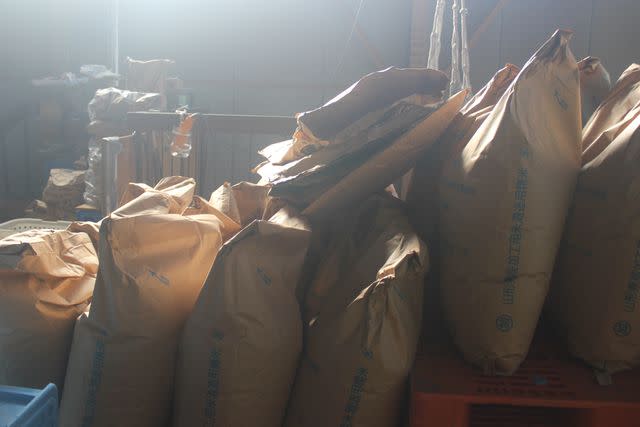How You Can Visit a 281-Year-Old Sake Brewery at the Foot of Mt.Fuji
The views do not disappoint.

Carey Stangl
One of my socks is damp, and people are yelling at me. Maybe it's not yelling. It's hard to say — they are speaking rapidly, loudly, in Japanese, and pointing at me, and without my shoes on, I can't run away (or get very far). Someone appears with a bucket of water and some towels and gestures for me to wipe my feet. I'm not sure why it's just me. Why doesn't anyone else have to do this? Do my feet smell that bad?
There's no time to think about it. They yank the socks from my hand, toss them in a trash bin, and slide my now bare and slightly damp foot into the tub and then into a fresh pair of slippers. My feet are freezing, still slightly wet, and naked in the slipper, exposed to the cold air of the brewery.
It's cold because a cold environment is where the best sake is produced, my guide tells me. And a clean one, he adds. It turns out I accidentally stepped on a mat filled with sanitizing chemicals, and they aren't worried about the sake, but my feet melting off.
As for the sake, I'll learn I'm in the company of masters.
Related: It's Never Been a Better Time to Drink Sake
Makino Sake Brewery has been open and operating since 1743, a humble 281 years. It's located in Fujinomiya within Shizuoka prefecture, just an hour's train ride from Tokyo. Notably, the brewery uses water flowing from Mt. Fuji to craft its sake. It's both because it's "the best water," according to Makino Toshikazu, the sake master, and equally because it's the closest source — from the roof of the building, Mount Fuji is within an arm's reach.

Carey Stangl
Makino is serious about sake, extremely serious. And yet, the more questions we ask, the happier and lighter he becomes. He begins to glow as he explains through a translator that the higher grade of sake depends on the polishing percentage of the rice (the higher, the better). He beams when he shows us some fermentation tanks, inviting us to climb on top and peer inside.
The workers in the factory are kind, too. They are seasonal workers coming down from the north to brew sake because the fisheries are closed in the winter.
Related: 5 Foolproof Sushi and Sake Pairings
Makino was kind enough to show us the koji room, where the fermenting agent is made for sake. The room is damp, humid, and hot, so hot that the men are naked as they are working. "They are naked because of contamination, not because of the heat," my guide explains. At least I only had to take my shoes off.

Carey Stangl
After the rice washing demonstration and an explanation of different grains and styles of sake, it's time for lunch. We're escorted up a hill to a ryokan, a traditional Japanese hotel, where a table is set out overlooking Mt. Fuji. Here, we will indulge in a four-course lunch, paired with the five full bottles of sake Makino has brought with him in a plastic shopping bag.
All of the food is seasonally prepared, but as for the sake, I imagine that's consistent. There's an "alive sake," which erupts almost like a volcano or lava lamp — it's "Japanese Champagne," according to Makino, and it's like a cloudy sake but bubbly instead. There's a "fresh sake," one that was just bottled, which is clear and crisp, and then three others which range from funky to floral, dry to sweet. It's the perfect drink paired with cold sashimi, warm hot pot, and an unbeatable view.
Best of all, at the end of the meal, you get to keep the sake you don't finish. This means you can do it all — the factory tour, lunch, and the tasting with the unbeatable view, and leave with four nearly full bottles of award-winning sake — for what feels like a small sum of just $200. And if you ruin your socks like I did, don't worry: Makino will insist on gifting you an extra pair.

Carey Stangl
For more Food & Wine news, make sure to sign up for our newsletter!
Read the original article on Food & Wine.


